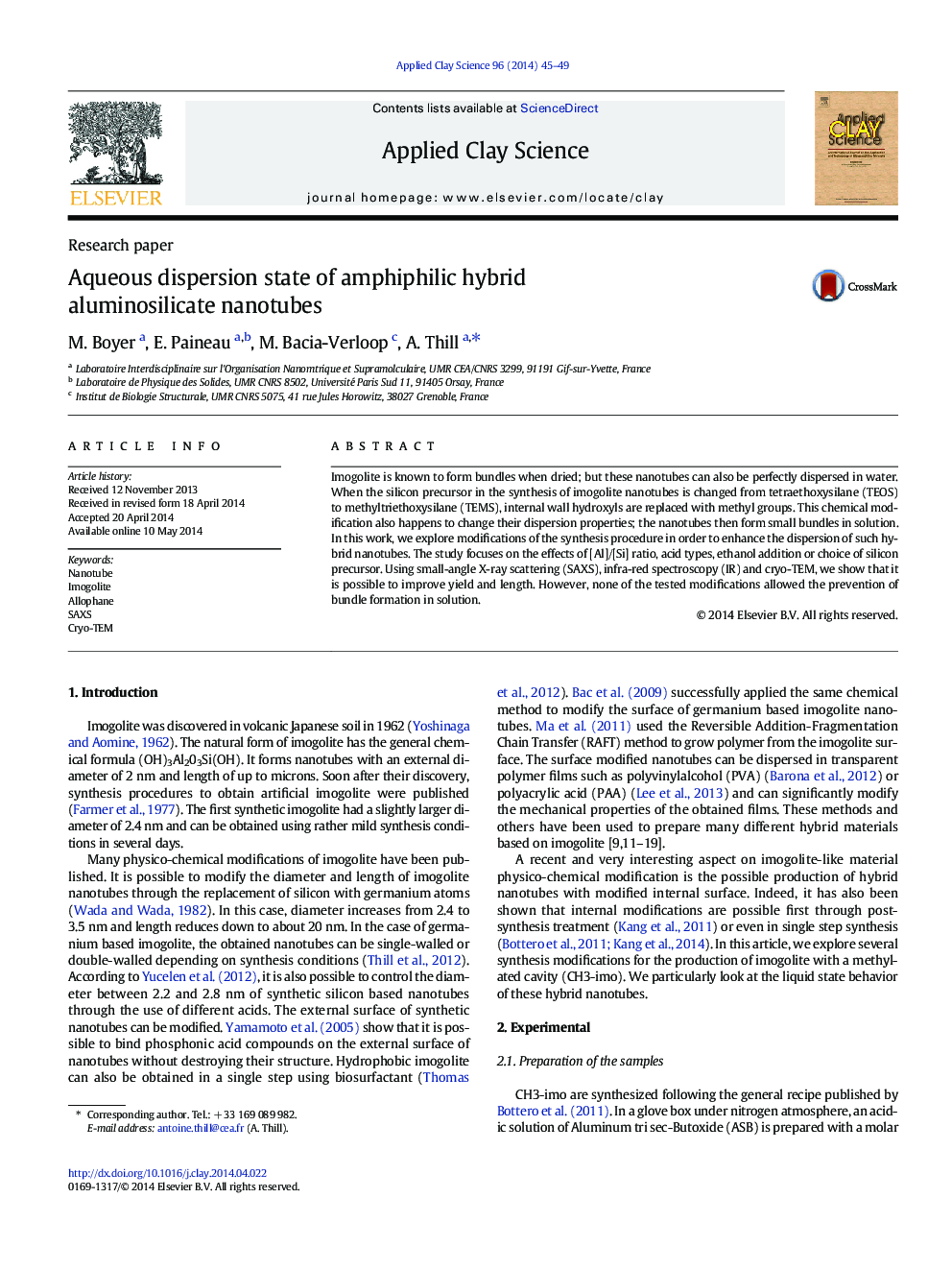| کد مقاله | کد نشریه | سال انتشار | مقاله انگلیسی | نسخه تمام متن |
|---|---|---|---|---|
| 1694774 | 1519081 | 2014 | 5 صفحه PDF | دانلود رایگان |
• The synthesis of hybrid imogolite with internal CH3 groups is robust.
• The obtained dispersions are sometimes turbid due to the presence of gibbsite.
• TMMS instead of TEMS allow the increase of the average length of the nanotubes.
• In all synthesis, the nanotubes form small bundles in solution.
Imogolite is known to form bundles when dried; but these nanotubes can also be perfectly dispersed in water. When the silicon precursor in the synthesis of imogolite nanotubes is changed from tetraethoxysilane (TEOS) to methyltriethoxysilane (TEMS), internal wall hydroxyls are replaced with methyl groups. This chemical modification also happens to change their dispersion properties; the nanotubes then form small bundles in solution. In this work, we explore modifications of the synthesis procedure in order to enhance the dispersion of such hybrid nanotubes. The study focuses on the effects of [Al]/[Si] ratio, acid types, ethanol addition or choice of silicon precursor. Using small-angle X-ray scattering (SAXS), infra-red spectroscopy (IR) and cryo-TEM, we show that it is possible to improve yield and length. However, none of the tested modifications allowed the prevention of bundle formation in solution.
Figure optionsDownload as PowerPoint slide
Journal: Applied Clay Science - Volume 96, July 2014, Pages 45–49
